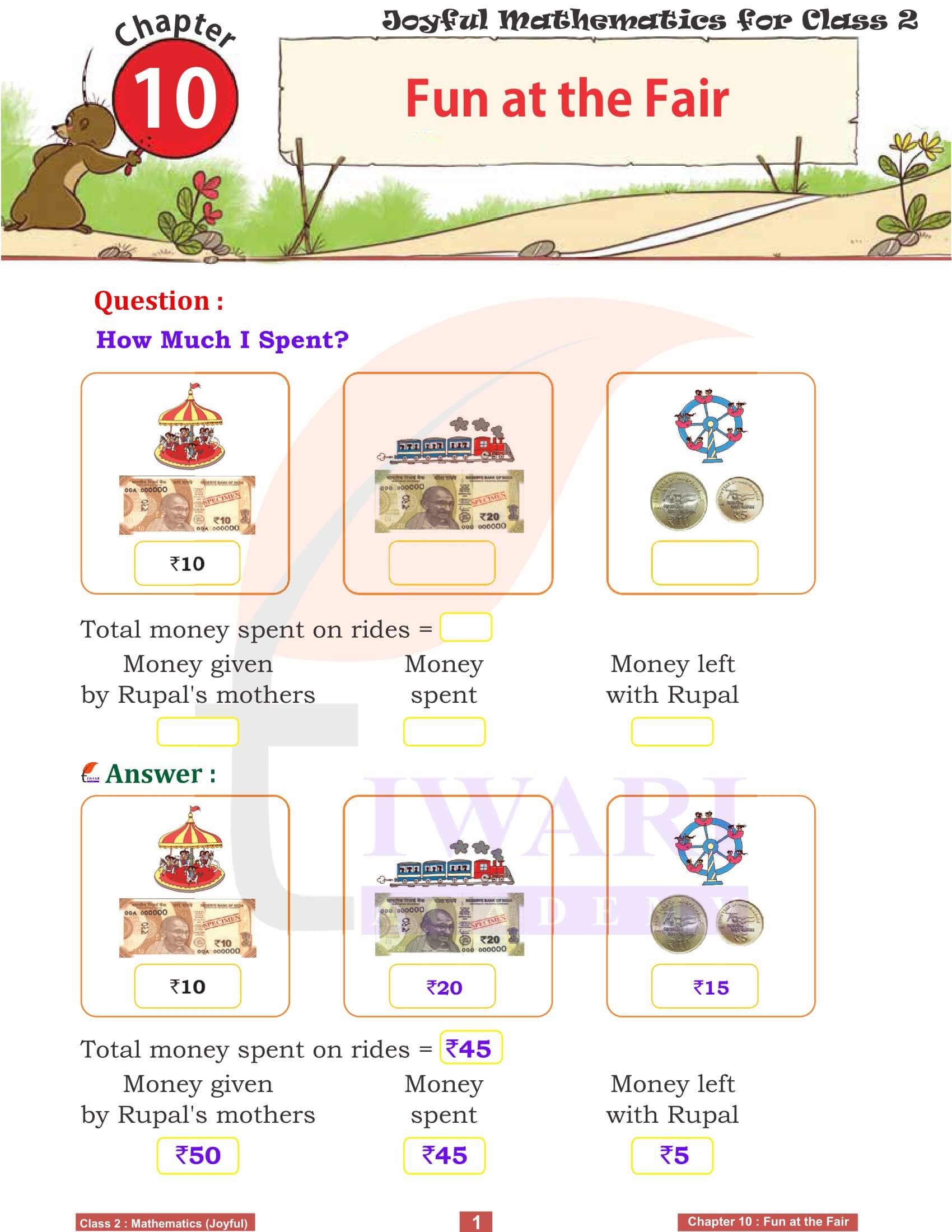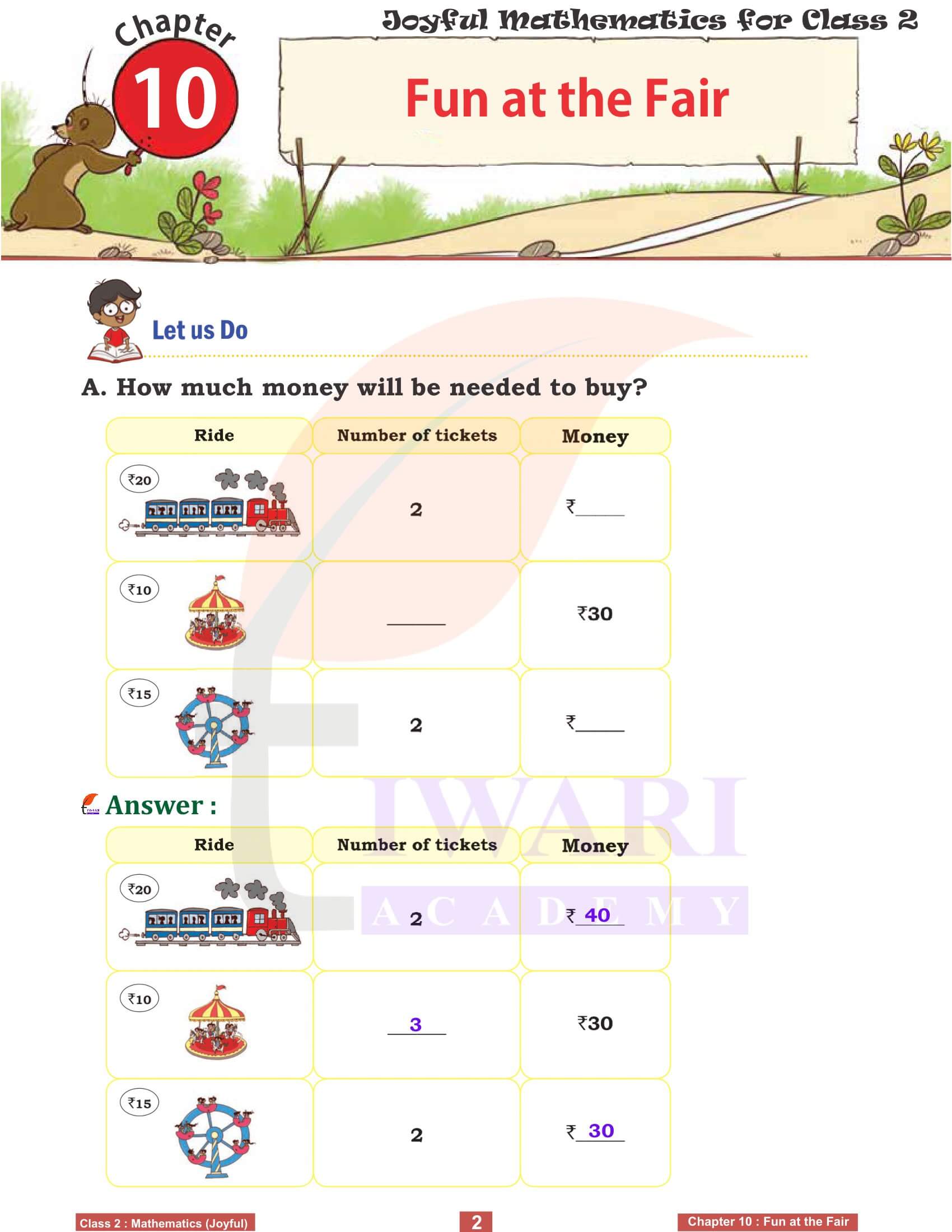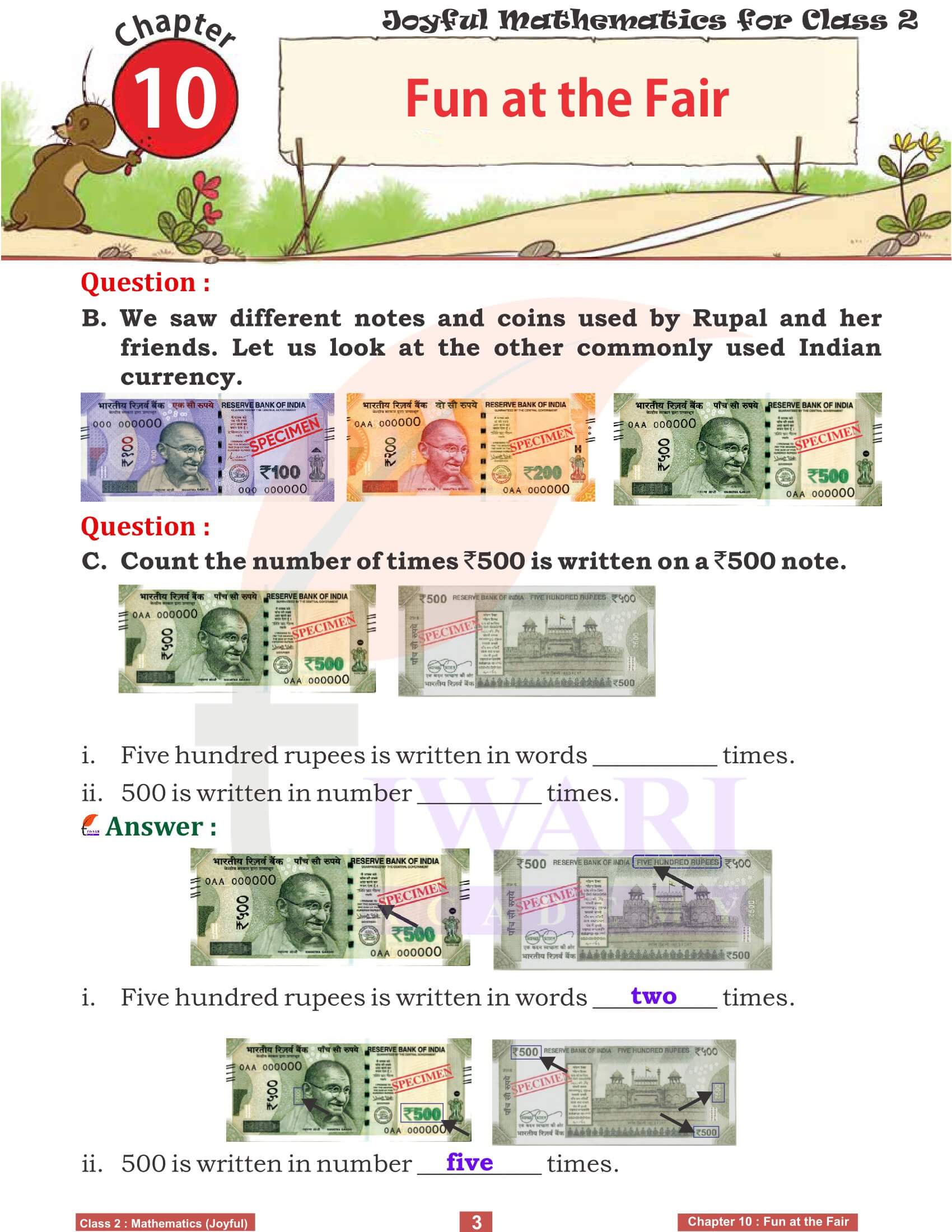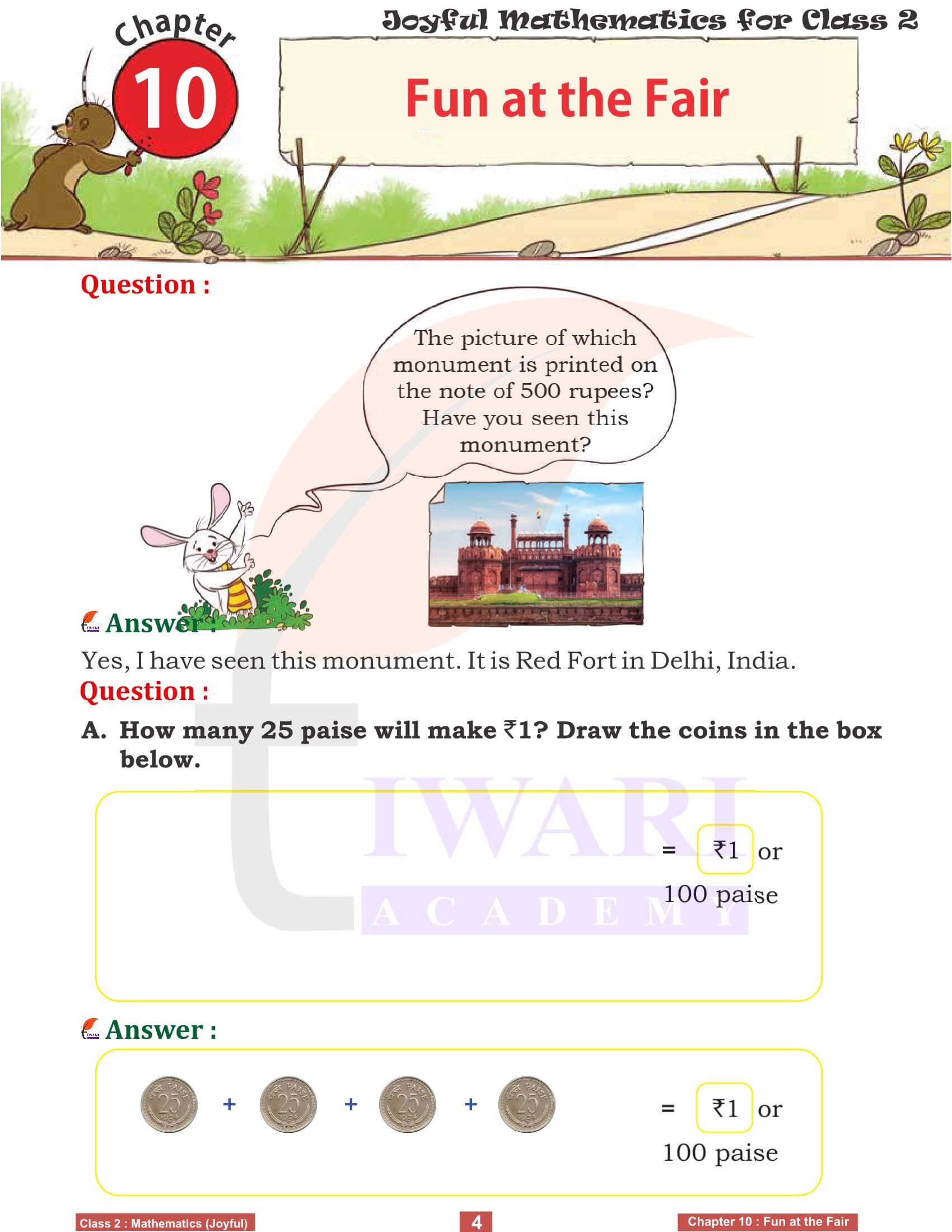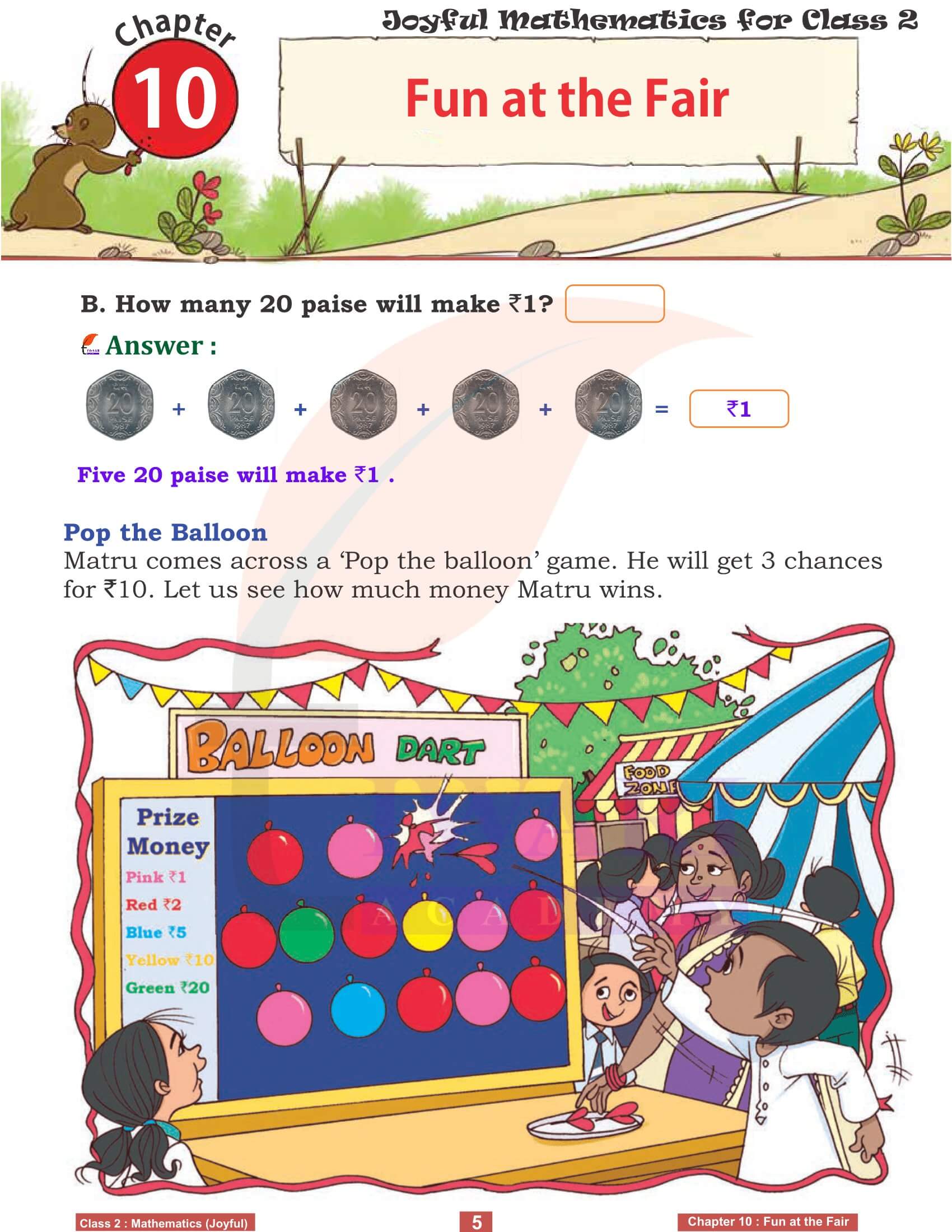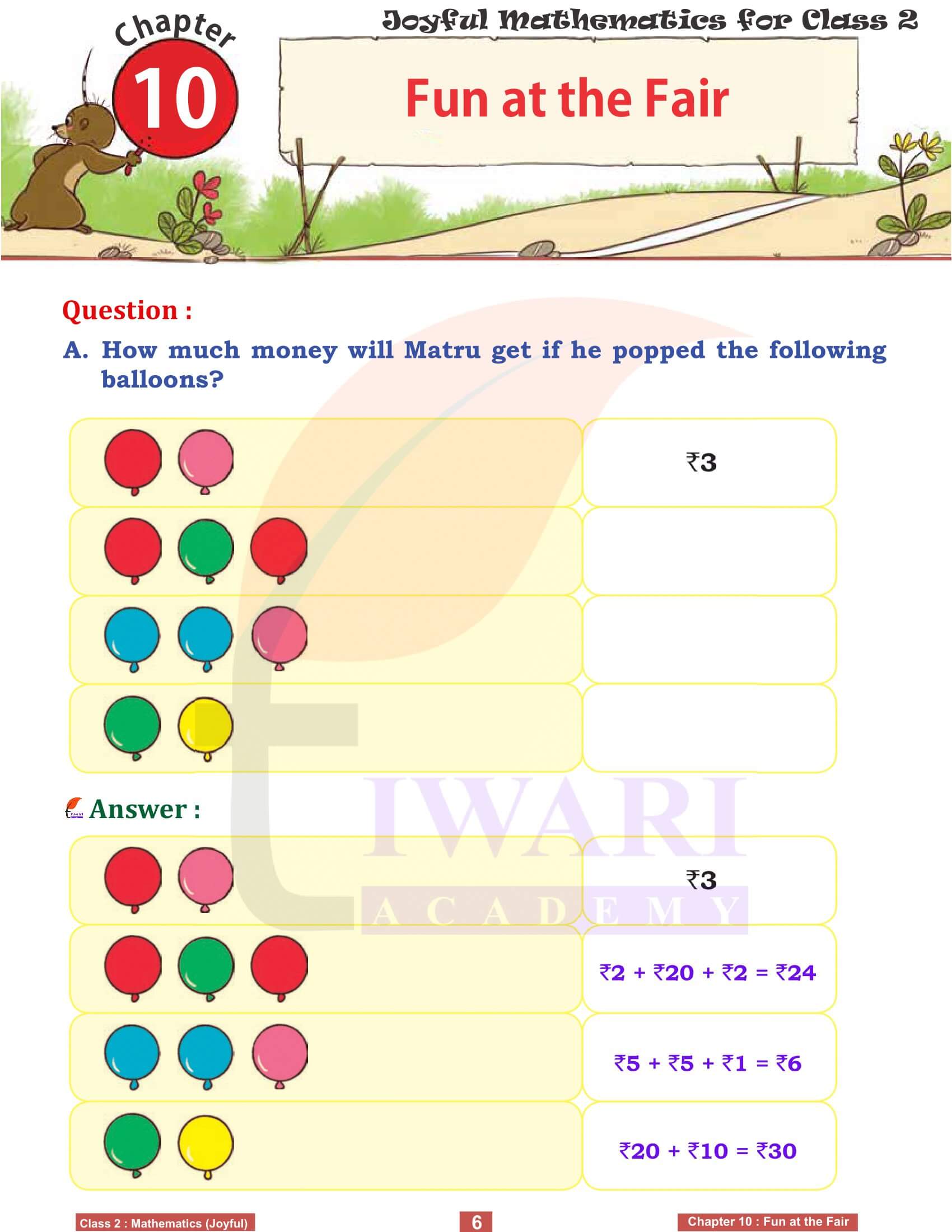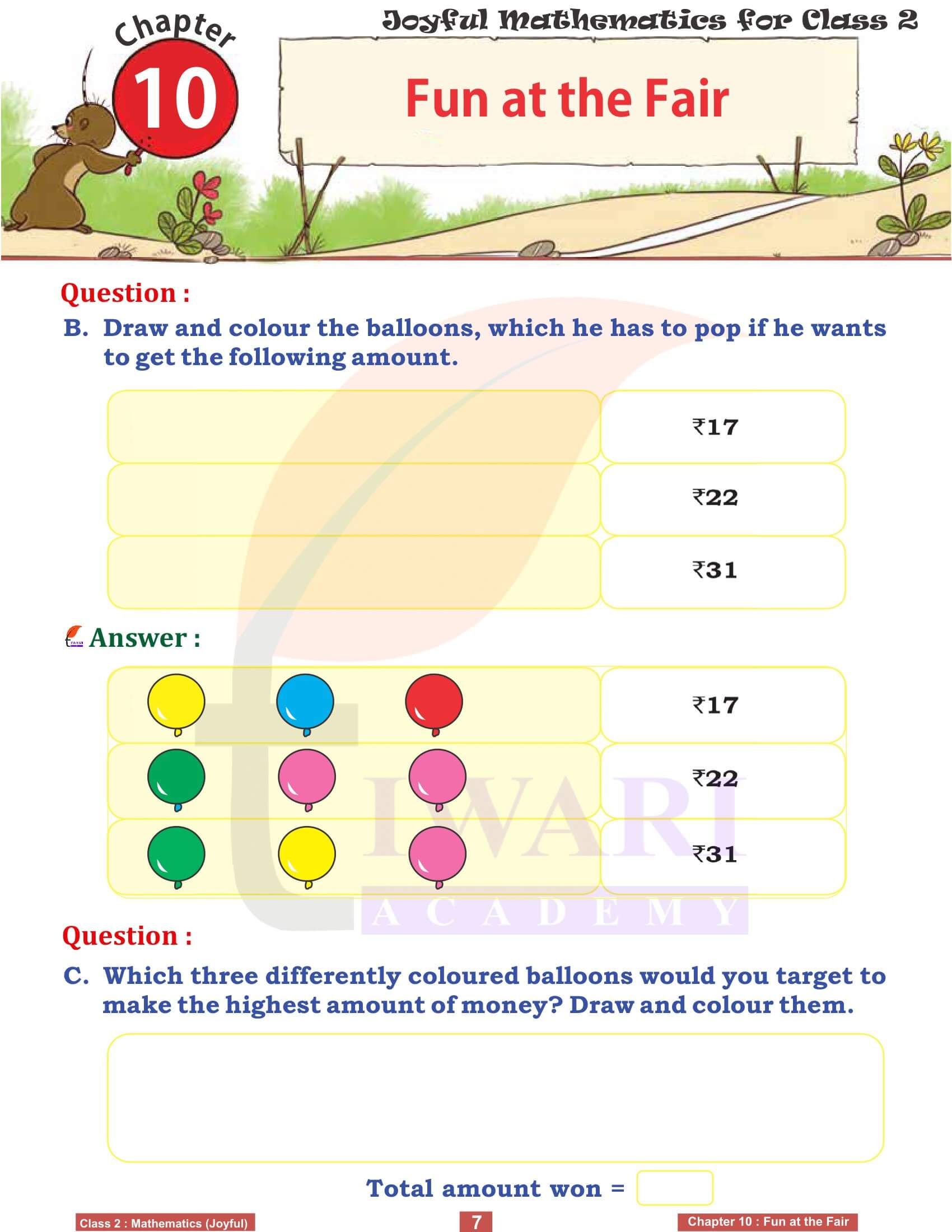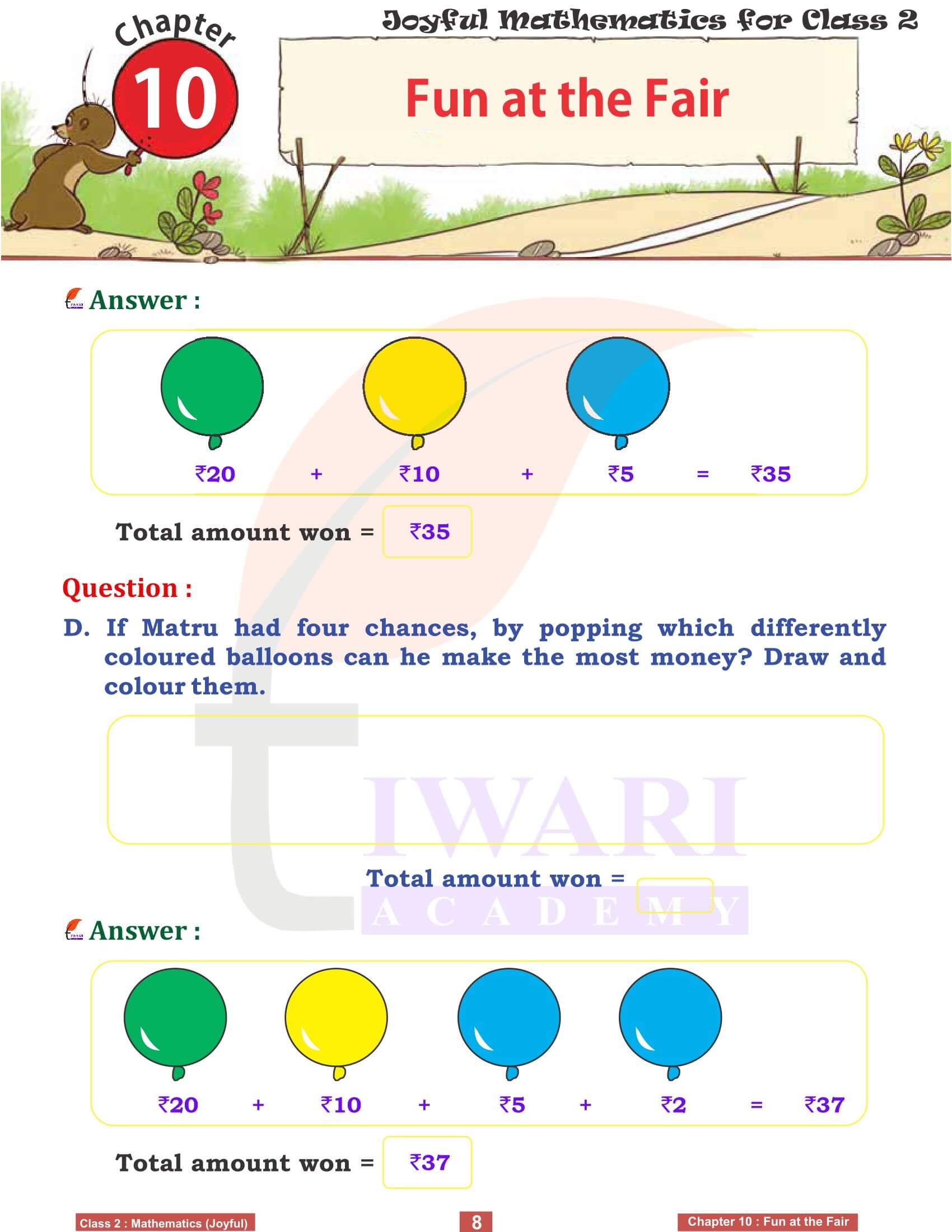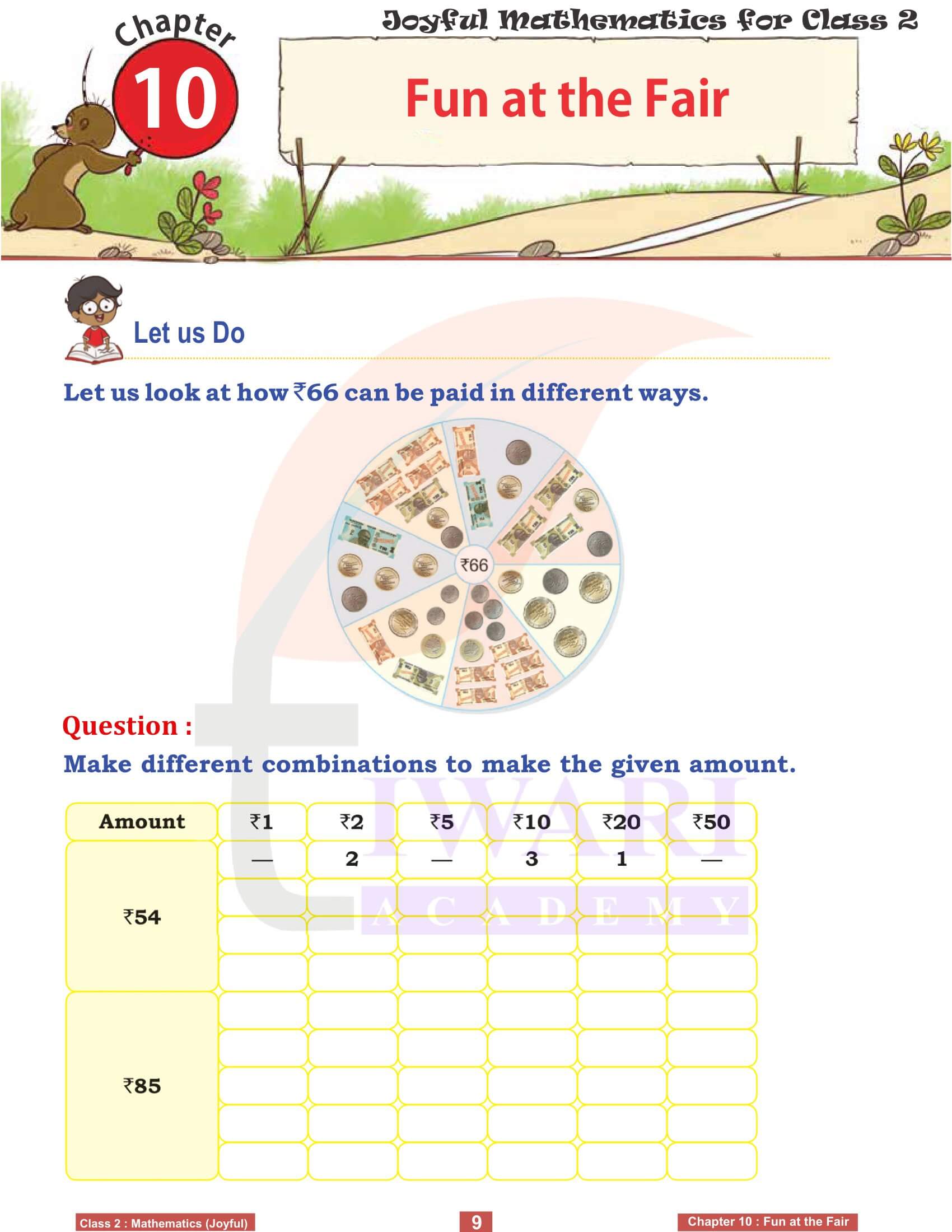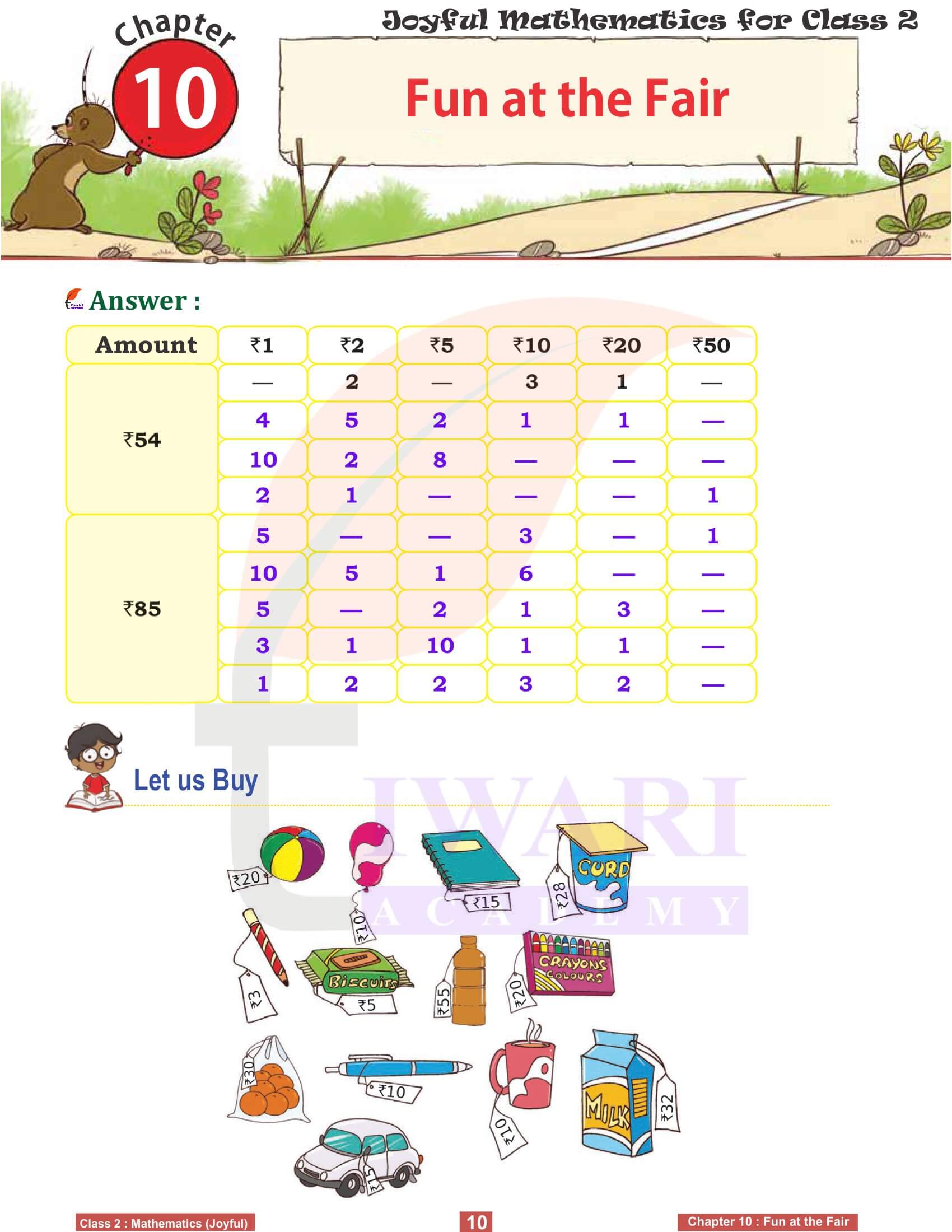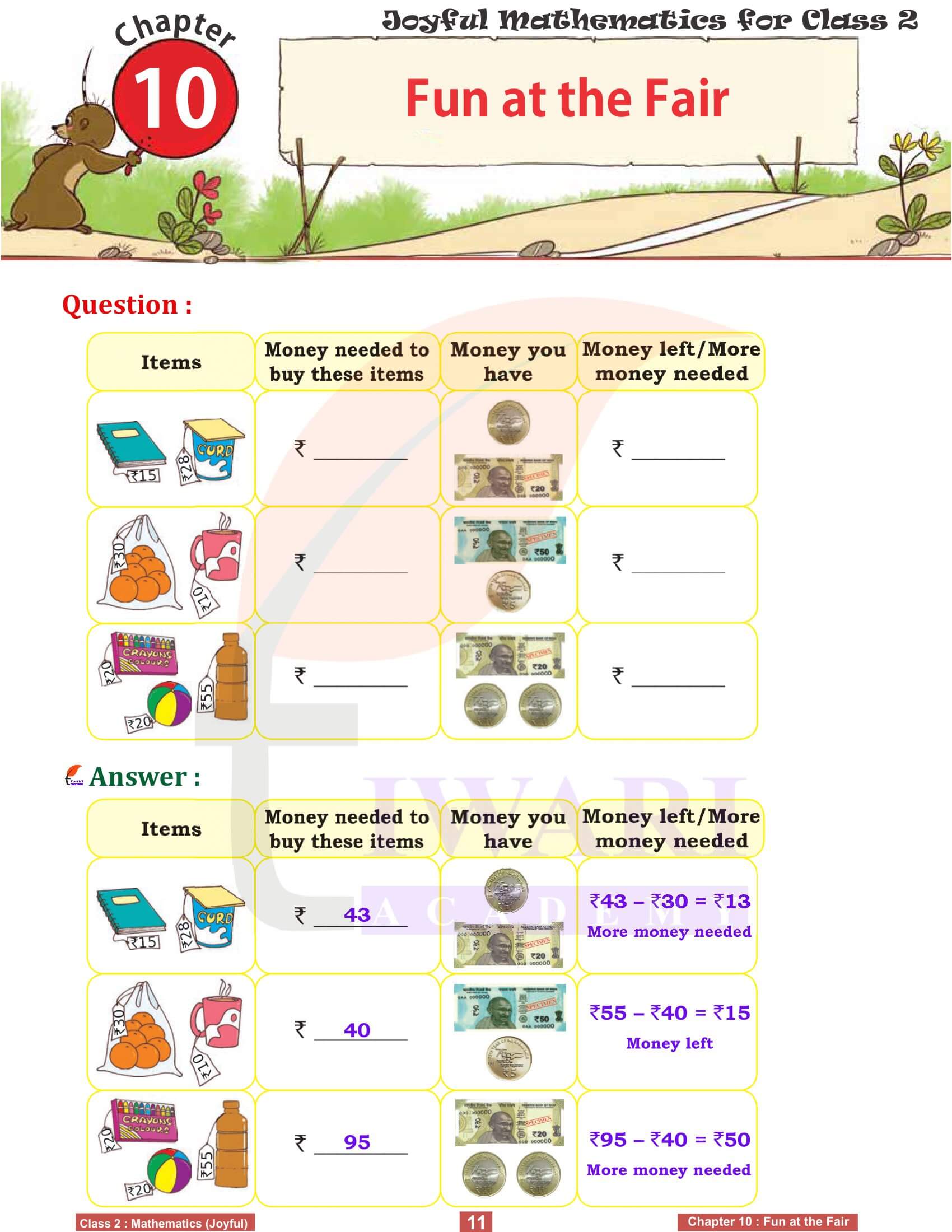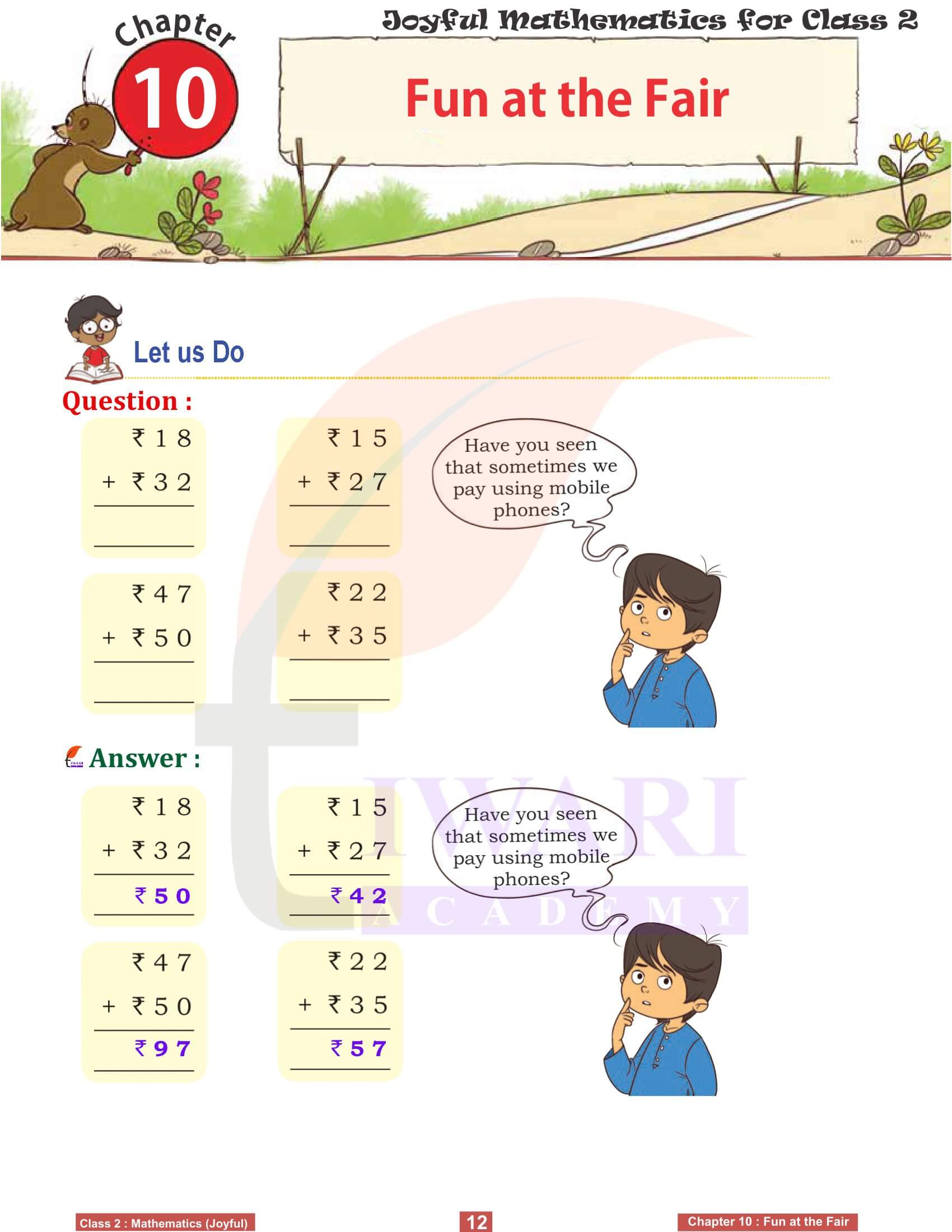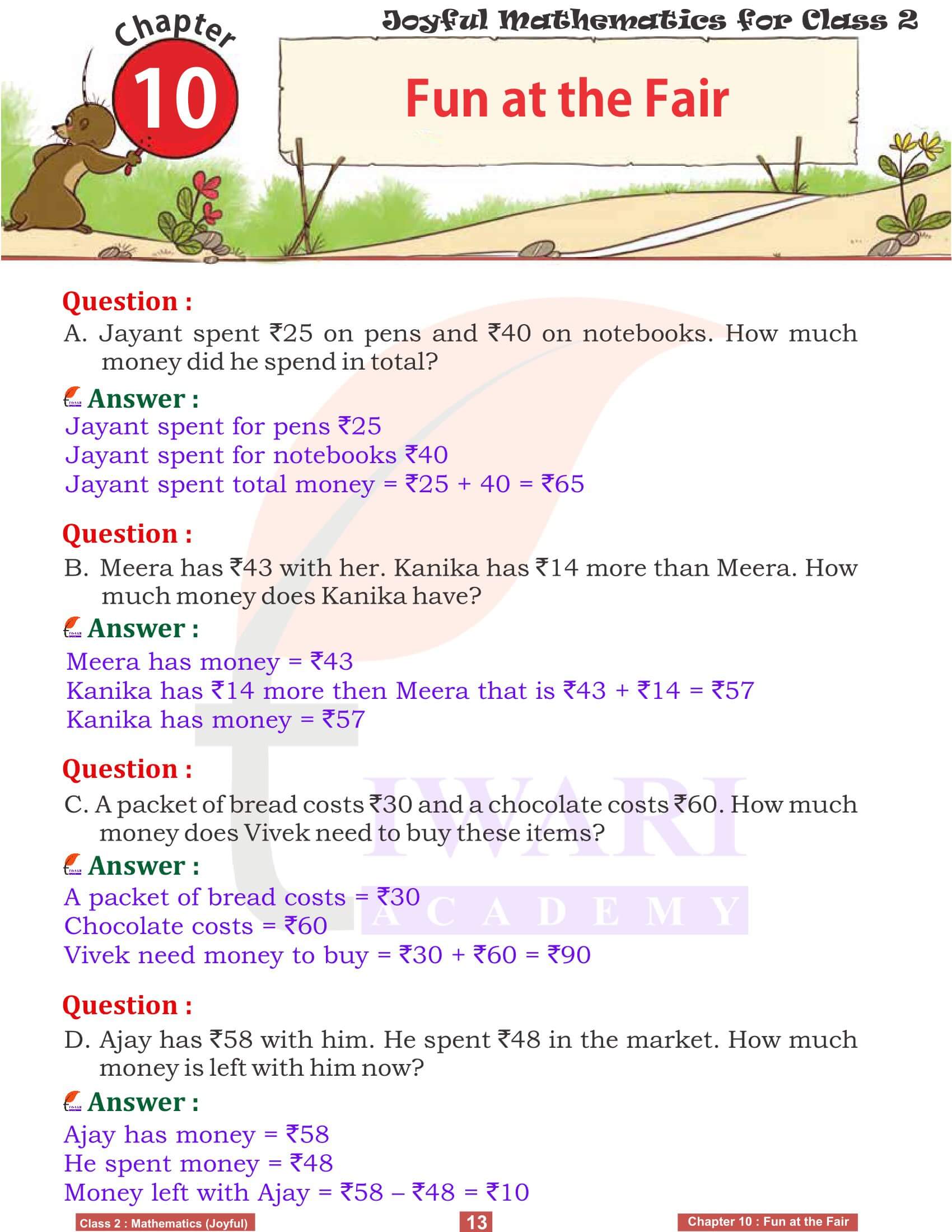NCERT Solutions for Class 2 Joyful Maths Chapter 10 Fun at the Fair (Money) in Hindi and English Medium updated for CBSE and State board session 2025-26. Class 2 Maths Chapter 10 Question answers are simplified according to NEP 2020. Class 2 Maths Chapter 10 Fun at the Fair is an engaging lesson that introduces young learners to important money concepts in a joyful and interactive way. This chapter, part of the Joyful Mathematics curriculum, uses fair-themed problems to make learning fun and relatable.
Study Plan for Class 2 Maths
Study Plan for Class 2 all Subjects
Class 2 Joyful Maths Chapter 10 Fun at the Fair Solutions
Students solve money exercises and participate in activities designed to enhance their understanding of addition, subtraction and basic monetary calculations. Interactive exercises like those found in NCERT Class 2 Math worksheets ensure a hands-on learning experience. With resources like Chapter 10 practice questions, teaching ideas and online quizzes, educators can create a vibrant classroom environment where students explore the fair’s stalls while learning about numbers.
Class 2 Maths Chapter 10 Fun at the Fair (Money)
In Class 2 Maths Chapter 10, Fun at the Fair (Money), young learners are introduced to the basic concepts of money in a fun and engaging manner. The setting of a fair is chosen as it is something most children find exciting and can relate to, making the learning process more intuitive and enjoyable. In this chapter, students learn about different denominations of currency, including notes and coins, and their respective values. They begin to understand how money is used in everyday transactions, such as buying tickets for fair rides or purchasing snacks, providing them with a practical context to apply their learning.
To support students in mastering Class 2 Maths Chapter 10 Fun at the Fair, NCERT solutions and worksheets are invaluable tools. These educational materials offer step-by-step guidance for solving questions and answering money-related problems. The chapter provides practice questions and assessment opportunities that test a child’s ability to apply learned concepts in real-life scenarios. Lesson plans and teaching resources cater to diverse learning styles, ensuring every student benefits. Parents and teachers can also use online videos and interactive games to bring the fun of the fair into study sessions, making the learning process more effective and enjoyable.
Understanding Currency
The chapter 10 of 2nd mathematics, delves deeper into the concept of currency, explaining the various denominations and their features. Children learn to identify and differentiate between different notes and coins based on their value, color and size. The illustrative examples are typically set in the fair context, where kids might need to use money to play games, buy food or purchase toys. This section helps students to become familiar with the physical aspect of money, fostering their ability to handle and manage it effectively in real-life situations.
Simple Transactions at the Fair
One of the key learning outcomes of the chapter 10 is understanding how transactions occur using money. Students are introduced to simple addition and subtraction operations through scenarios like spending money at different stalls in the fair or getting change back after a purchase. These real-life examples make abstract mathematical concepts more tangible for the children. The exercises included in the chapter encourage students to practice these operations, reinforcing their understanding of how money works in everyday exchanges.
Importance of Budgeting
Class 2 Mathematics chapter 10 touches upon the concept of budgeting in a very rudimentary form. It teaches children the importance of spending money wisely, illustrating scenarios where they have to decide how to spend their limited amount of money at the fair. This introduces the concept of financial decision-making and prioritizing expenses, which are crucial skills in financial literacy. By incorporating these lessons in the context of a fair, children learn to associate these financial principles with enjoyable experiences, aiding in their long-term retention.
Interactive Activities and Real-Life Applications
“Fun at the Fair (Money)” is enriched with interactive activities that require students to engage actively with the content. These activities might include role-play exercises where students pretend to buy and sell items at the fair, or worksheets that simulate shopping experiences. By providing opportunities for hands-on learning, the chapter ensures that students can apply the concepts they have learned in a variety of contexts, enhancing their practical understanding of money management.
Chapter 10 of Class 2 Maths serves as an introductory platform for young learners to navigate the world of money through the engaging theme of a fair. It lays down the foundational understanding of currency, transactions and financial decision-making in a child-friendly manner.
The inclusion of practical exercises and real-life scenarios ensures that students not only grasp the theoretical aspects of money but also learn to apply them in their daily lives, setting the stage for more advanced financial education in the future.
What is the main concept taught in Class 2 Math Chapter 10, Fun at the Fair?
The chapter focuses on teaching money concepts through fair-themed problems. It helps students learn basic addition, subtraction and monetary calculations in an engaging and practical way.
How can parents support their child with Chapter 10 in Class 2?
Parents can use NCERT solutions, worksheets and online videos to explain concepts. Interactive games and practice questions can also help children understand and enjoy the chapter.
Are there any resources for teaching Chapter 10 of NCERT Class 2?
Yes, resources include NCERT Class 2 Maths worksheets, lesson plans and interactive activities. Teachers can also use online quizzes and educational games to make the topic more engaging.
What types of problems are covered in Class 2 Maths Chapter 10?
The chapter 10 of NCERT Textbook Class 2 Maths covers fair-themed problems involving addition, subtraction, and basic monetary transactions. These problems aim to build practical math skills in a fun and relatable context.
Where can I find solutions for Chapter 10 of NCERT Textbook in Class 2 Math?
Solutions can be found in NCERT guides, Class 2 Maths practice books and online platforms like Tiwari Academy offering chapter-wise explanations and video tutorials. These resources simplify learning for children.
